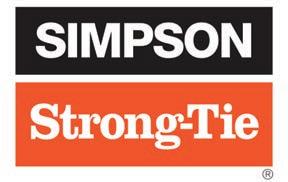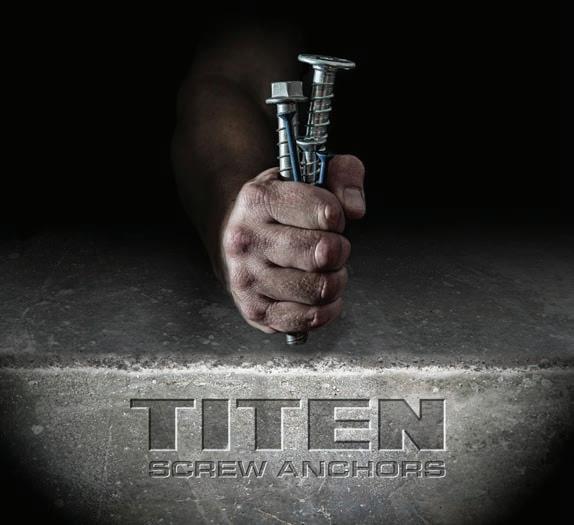
10 minute read
The Accuracy of Laser Measurement Devices
Bosch Power Tools & Accessories
The Accuracy of Laser Measurement Devices
Translating an architect’s thoughts, designs, and calculations into real-world edifices requires accurate measurements of everything on the job sites. That means what is used to measure must be accurate and conform to standards for every use. While sometimes little notches in wood or metal are used to measure inches and feet, like a ruler or tape measure, today’s advanced devices that can use sound and light to measure an entire project in mere minutes.
It goes unsaid that accuracy is extremely important. With flatwork for instance, accurately measuring the length, width, depth, and slope are all critical factors that mean the difference between success and abject failure. Inaccurate measurements bring issues from puddles due to poor drainage to unwanted cracks and instability, which can undermine the integrity of the building.
The question is, how can a tradesperson ensure the measuring tools they use on the jobsite are accurate and will perform appropriately in varying conditions? When it comes to measuring, three of the most widely used tools are the traditional metal tape measures, sonic wave generators and laser range finders.
STEEL TAPE MEASURES
The National Institute of Standards and Technology (NIST) has an underground facility staffed by professional metrologists—scientists that study and practice the science of measurement. This intrepid group calibrates master tape measures for athletic organizations, crime scene investigators and others. They employ a number of techniques to ensure that tape measures are accurate. For instance, a tape measure that is 60 meters (about 197 ft.) can be confirmed within 0.1 mm, or the thickness of a piece of paper.
The reason why tape measures are on pretty much every tool belt around the world is they work, are inexpensive and can handle most of what is thrown at them. The challenge with tape measures is that several factors can impact their accuracy—or lack thereof. For instance, because they are usually steel they are subject to thermal expansion, which is the tendency of matter to change its shape, area, volume and density in response to a change in temperature. In other words, temperature can make
them shrink or expand depending on how hot or cold the environment is at the jobsite. Steel tapes are calibrated to have the optimum measurement at 68° F (20° C). On a hot summer day where the temperature can get over 100° F (38° C), they can be off by enough to require correction. Common steel tapes have a coefficient of thermal expansion about 0.000,011,6 units per unit length per degree Celsius change. This means that the tape changes length by 1.16 mm per 10 m with every 10° C change from the standard temperature. For a 30-m long tape with standard temperature of 68° F, at 104° F, the change in length is 7 mm over the length of the tape.
ELECTRONIC MEASURING
The digital revolution has brought some new technology that has been gamechangers when it comes to the speed and accuracy of taking measurements anytime, anywhere. Manual range finders or distance measuring tools are handheld, lightweight, and batterypowered, which allows for several hours of regular use each day.
They usually come in two categories, electromagnetic distance measurement (laser) or ultrasonic (sound). These operate in similar ways but deliver quite different results. They work by sending out light or sound to an object they want to measure then the signal reflects off that surface and returns to the rangefinder where the device instantly calculates the distance.
Ultrasonic devices can measure the distance of objects regardless of shape, color, or surface texture and they can also measure moving objects. They can be used without needing to touch an object, which helps in wet concrete scenarios. At retail, they usually cost less than laser rangefinders but come with two massive disadvantages, they have significant range limitations and are notoriously inaccurate. Errors are caused by the sound reflecting random items close to where they are pointing, instead of the desired target. Because of this, ultrasonic devices work best on clean surfaces in empty rooms.
LASER RANGEFINDERS
Today’s digital laser distance measuring tools have been designed for functionality, usability, and accuracy. Besides the fact that they can be operated by a single person, they are also much less susceptible to user errors such as incorrect positioning. What’s more, is some rangefinders come

Strength runs in the family.


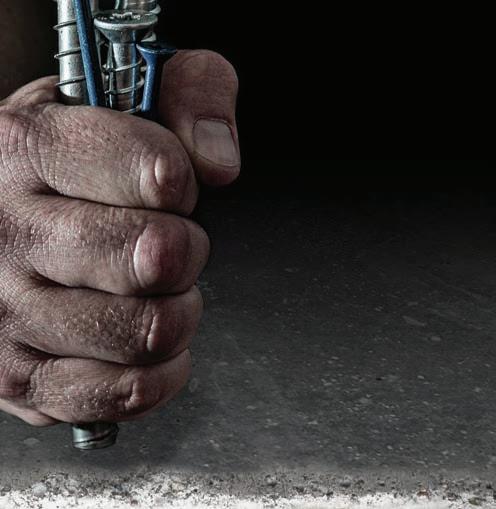
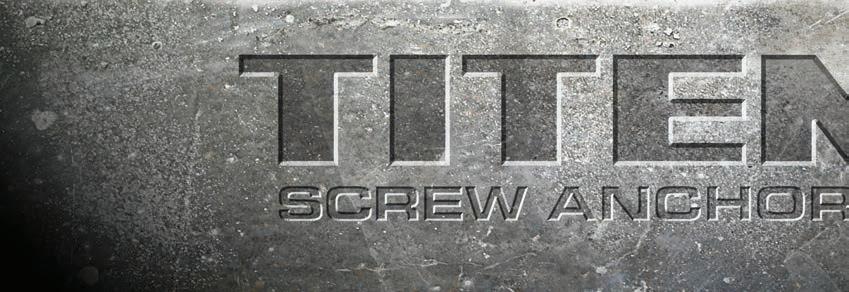
The Titen® family of concrete and masonry anchoring solutions from Simpson Strong-Tie. Our broad range of versatile and innovative screw anchors is designed for maximum ease and efficiency — ensuring a quick, smooth installation every time. And our skilled field support teams are always available to assist on the jobsite. To learn more about our full line of easy-to-install Titen solutions, visit go.strongtie.com/titenfamily or call (800) 999-5099.
Bosch Power Tools & Accessories equipped with 5-megapixel cameras to record every measurement taken, can calculate the area and volume of a space automatically, and uses Bluetooth technology to connect the device to a smartphone or tablet. This enables managers to see measurements and images from wherever they are.
HOW CAN YOU CONFIRM ACCURACY?
Laser distance measuring tools work as well at short distances as long distances, with some being accurate to within 1/16 of an inch at 400 ft. Here are some tips to ensure your laser-based measurement device is calibrated correctly and to confirm its accuracy: • Get familiar with the device. Learn its various functions and capabilities. • One way of checking a range finder is by using a regular tape measure.
Some devices have live measuring features, which provides real-time
measurement that adjusts as the user moves closer to and farther from the target, just like a tape measure. • Always have a benchmark (all jobsites have one) and check it against that benchmark– that’s one sure way to know if it is accurate. Go out 50 ft. with a tape measure and confirm with the device. • Make sure the device has an easy-toread display—having a backlit display is a huge help in dark rooms or other low-light situations. • Use the built-in spot level, a bubble display will move vertically or horizontally to help the user know if they are holding the device still. • Having a camera is helpful. This should capture the measurements and provide a timestamp. • Use the manual crosshair calibration function. This feature uses a crosshair like on a rifle to calibrate. Place the device on a level surface and shoot the laser at a point 16-ft. away. If the dot is not in the center, it can be manually calibrated for the bullseye.
It takes about five seconds to calibrate the crosshair, go into function mode and save the crosshair calibration. Use this function if the device is dropped or to simply reconfirm accuracy. • If still unsure, push the calibration button and it will do it automatically.
With the right device in hand, one person can do in literal seconds what used to take hours to accomplish. That’s what technology is supposed to do, make things faster, easier, and in this case, more accurate than ever before.
Zoher Fatakdawala is the Market Development Manager at Bosch Power Tools.
Find this article at
ForConstructionPros. com/21993408
VERSATILITY & ACCURACY
The two things you need to add to your concrete screeding tool box.
The LIGCHINE SCREEDSAVER ELITE and SCREEDSAVER MAX PLUS offer unique and powerful capabilities to assist in accurately and quickly screeding around stickups and foundation details.
SIDE-SHIFTING SCREEDHEAD SWINGBOOM FRAME TECHNOLOGY


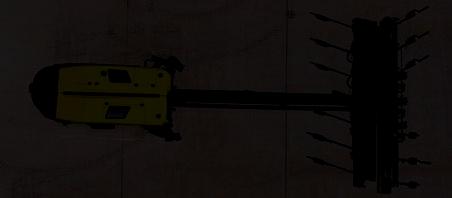



The SCREEDSAVER ELITE features a Side-shifting Screedhead to easily manuver the through the complexities of your pour without shifting the machine. The SCREEDSAVER MAX PLUS comes equiped with
Swingboom Frame Technology
which allows for over 5 feet of lateral screedhead movement.






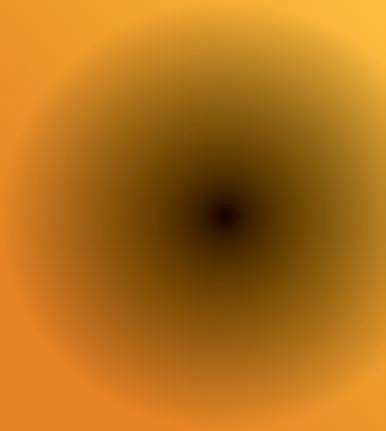

Avoid the Hidden Dangers to Your Bottom Line


Sometimes the scariest hazards for a concrete contractor are the unseen dangers to your bottom line, like inaccurate estimates. A lack of con dence in your estimates can lead to non-competitive bids or worse, a winning bid that doesn’t result in achieving your target margin.

Visit www.tek.la/hiddendangers to learn how Tekla Structures can help.


MINNICH’S VERSATILE INNOVATIONS HELP MEET TODAY’S CONCRETE PLACEMENT CHALLENGES
Minnich Manufacturing, the leading manufacturer of concrete dowel pin drills, concrete vibrators and vibrator monitoring systems, is dedicated to helping concrete contractors maximize efficiency. Minnich’s Stinger and Controlled Speed Vibrator (CSV) are just two examples of how the company’s concrete innovations serve customers. The light yet rugged Stinger electric flex shaft concrete vibrator is a 14.5-pound double-insulated universal motor that can drive the full line of Minnich vibrator shafts and heads from ¾ inch to 2 ½ inches. The CSV enables contractors to communicate using their cell phone’s Bluetooth to select set speeds of vibrations per minute (VPM) in coordination with the concrete slump being poured. Minnich will continue to bring products to the industry that support the findings of concrete research facilities across the country. For more information, visit www.minnich-mfg.com
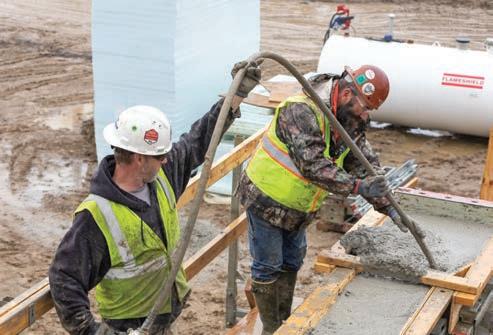

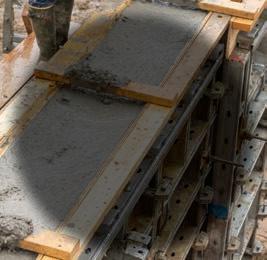

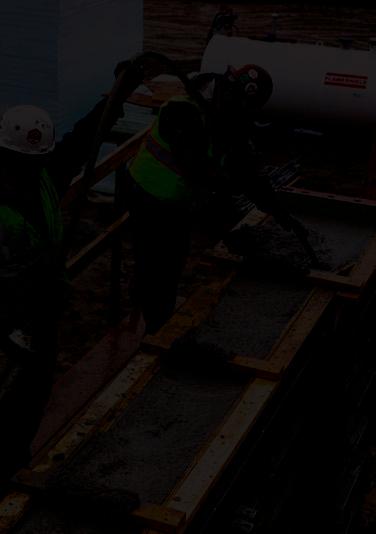
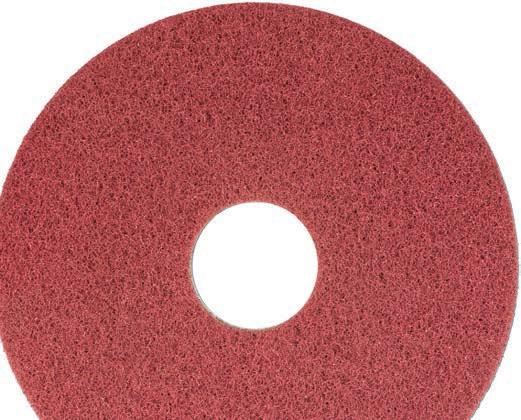
MAINTENANCE PADS THAT WILL OUTPERFORM ANYTHING YOU HAVE USED.

The SUPRASHINE system includes a complete range of pads for all your floor care needs - restore, strip, deep clean, upgrade gloss, and daily clean. • The best results in floor cleaning, gloss level and pad lifespan. • Simplifiied, e cient and sustainable process.


www.superabrasive.com
TITEN® CONCRETE AND MASONRY ANCHORING SOLUTIONS
From light- to heavy-duty installations, our broad range of Titen concrete and masonry anchoring solutions has exactly what you need to get the job done reliably. Backed by our long-standing legacy of expert engineering, each of our versatile and innovative screw anchors is designed for maximum ease and efficiency — ensuring a quick, smooth installation the first time, every time. And our skilled field support teams are always available to assist on the jobsite.
To learn more about the full line of easy-to-install Titen solutions from Simpson Strong-Tie, visit go.strongtie.com/ titenfamily or call (800) 999-5099.
